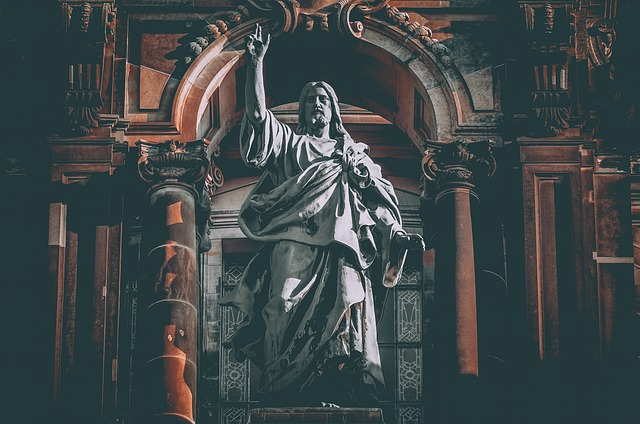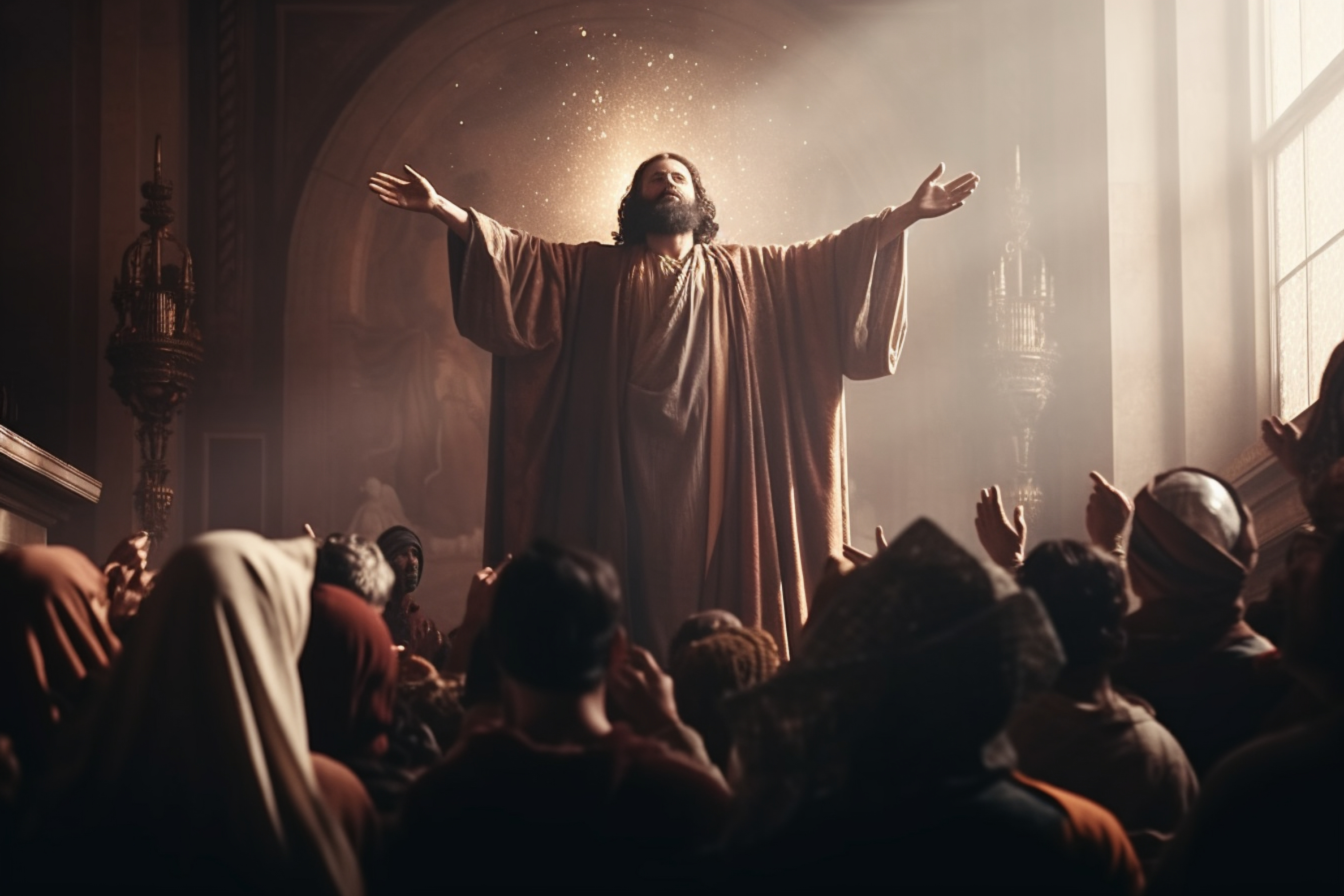Unlocking the Secrets of Matthew: A Study of Matthew 9

Unlocking the Secrets of Matthew: A Study of Matthew 9

Have you ever wondered about the deeper meaning of the events and teachings in Matthew 9? This chapter of the Bible is brimming with powerful lessons and miraculous stories that reveal the compassionate nature and divine power of Jesus Christ. Let’s dive into the key moments of Matthew 9 and unlock the secrets of this captivating passage, gaining fresh insights and understanding of its significance in our faith journey, with a special focus on San Matthew.
Join us as we explore Jesus’ interactions with tax collectors, his miraculous healing abilities, and his thought-provoking teachings on fasting and new wine in the context of San Matthew. We’ll also unravel Jesus’ compassionate heart for the people and his emphasis on spreading his message to all.
Key Takeaways
-
Jesus shows compassion and forgiveness through healing, teaching, and dining with sinners.
-
Jesus offers hope by performing miraculous healings to the paralyzed man, blind men and possessed man.
-
He encourages us to open our hearts to new teachings of fasting & wine while joining Him in prayer for more laborers to share His love & compassion.
Jesus and the Tax Collectors: A Lesson in Forgiveness

In a world where forgiveness is often in short supply, Jesus’ encounter with a tax collector named Matthew provides a powerful lesson in acceptance and compassion. Tax collectors in those days were despised and shunned by their community, but Jesus saw beyond the labels to the heart of a man in need of redemption.
Jesus’ actions show that forgiving and accepting those who differ from us is fundamental, regardless of their history or societal position. Jesus highlights the transformative power of grace and its healing impact on the human soul by extending love and forgiveness even to the most improbable candidates.
Jesus Calls Matthew
As Jesus passed by the tax collector’s booth, he saw a man named Matthew sitting there and kindly invited him to follow him. This simple yet powerful invitation marked a turning point in Matthew’s life, as he left behind his old occupation and embraced a new life as a follower of Jesus. The ruler of the synagogue, a prominent figure in the community, also asked Jesus to heal his daughter at the ruler’s house, displaying his faith in Jesus’ power and compassion.
Jesus’ compassionate response to Matthew and the ruler’s plea underscores his infinite mercy and capacity to bring hope and healing to dire situations. His divine power is further showcased when he restores life to the ruler’s daughter, defying the ridicule of the crowd and leaving them in awe of his miraculous abilities.
Dining with Sinners
After calling Matthew to follow him, Jesus sat and shared a meal with tax collectors and sinners, a group that was considered outcasts and unworthy in the eyes of society. This act of love and acceptance clearly demonstrated Jesus’ compassionate nature and understanding of all people, regardless of their background.
The decision of Jesus to dine with tax collectors and sinners conveyed a strong message to the observers. He was willing to associate with the marginalized and extended his healing and forgiveness to them, transforming their lives and offering them hope for a better future.
Pharisees Question Jesus

The Pharisees, who were strict adherents of Jewish law, questioned Jesus about his actions, particularly his choice to dine with tax collectors and sinners. Jesus’ response to their inquiry was both gentle and insightful – he explained that he came to invite sinners to repentance, not those who considered themselves righteous. This statement reveals Jesus’ ultimate mission: to offer hope, healing, and forgiveness to those in need of it, regardless of their status or past mistakes.
The dialogue with the Pharisees also reminds us to concentrate on offering forgiveness and understanding to those in our surroundings. Rather than judging others, we must follow Jesus’ example and strive to be agents of healing and transformation in the lives of those we encounter.
Miraculous Healings in Matthew 9

In addition to his powerful teachings on forgiveness and acceptance, Matthew 9 also showcases several miraculous healings performed by Jesus. These healings demonstrate Jesus’ divine power and reveal his compassionate heart for those in need.
Exploring the stories of the paralyzed man, the blind man, and the demon-possessed man deepens our appreciation for Jesus’ healing ministry. Through these miraculous events, Jesus offers hope and restoration to those who suffer, emphasizing that no situation is beyond his power to heal and transform.
Healing the Paralyzed Man
The cure of the paralyzed man powerfully exemplifies Jesus’ divine authority and limitless compassion. When Jesus saw the faith of those who brought the man to him, he lovingly forgave the man’s sins and healed him, enabling him to walk again.
This act of Jesus healing not only restored man’s physical abilities but also served as a testament to Jesus’ power to forgive sins and bring spiritual wholeness. The onlookers were filled with awe and praised God, recognizing the unparalleled power and love displayed by Jesus in this miraculous event.
Restoring Sight to the Blind Men
In another remarkable display of his healing abilities, Jesus restored sight to two blind men who approached him for mercy and compassion. Their humble request and faith in Jesus’ power to heal touched his heart, leading him to perform a miracle that transformed their lives.
The healing of the blind men serves as a reminder of the boundless compassion of Jesus and the power of God, which responds to the faith of those who seek Him. Through this miraculous event, Jesus offers hope and restoration to the blind men and demonstrates his unwavering commitment to healing the brokenhearted and downtrodden.
Casting Out Demons
The casting out of demons from a possessed man further highlights Jesus’ authority over evil spirits and his power to deliver those in bondage. In a single act of divine intervention, Jesus freed the man from the torture of demonic possession and restored his dignity and wholeness.
Jesus’ commanding display of authority over evil forces reminds us that no situation is beyond his reach. Through his healing ministry, Jesus offers hope and liberation to those who suffer, revealing the limitless power and love of God at work in the world. As Jesus arose, he demonstrated his victory over death and darkness, further solidifying his divine authority.
Teachings on Fasting and New Wine

As we delve deeper into the teachings of Jesus in Matthew 9, we encounter his insights on fasting and the importance of embracing new teachings. Jesus’ words challenge traditional practices and invite his followers to adopt a fresh understanding of their relationship with God.
We invite you to delve into Jesus’ teachings about fasting and the bridegroom, along with his engaging parable of new wine. These thought-provoking lessons not only enrich our understanding of Jesus’ ministry, but also inspire us to seek new depths in our faith journey.
Fasting and the Bridegroom
In response to a question about why his disciples did not fast like John the Baptist’s disciples or the Pharisees, Jesus explained that fasting was not appropriate while he was with them. He used the analogy of a wedding feast, pointing out that guests cannot fast while the bridegroom is present, but they will fast when he is taken away.
This instruction illuminates the role of fasting in the disciples’ lives and underscores the unique bond they shared with Jesus. It also serves as a reminder to us that our spiritual practices should be guided by our relationship with Christ and the season of life we find ourselves in.
The Parable of New Wine
The parable of new wine is a compelling illustration of the need for new teachings and practices in our faith journey. Jesus emphasized that his ministry introduced a new covenant, which could not be contained within the old institutions of Judaism.
This parable challenges us to embrace the new teachings and practices that Jesus brings, allowing our faith to grow and transform as we follow him. As we seek to understand and apply Jesus’ teachings in our lives, we can experience the fullness of the new wine that he offers – a vibrant, life-giving faith that transcends tradition and draws us closer to him.
Compassion and the Harvest

Throughout Matthew 9, Jesus’ compassion for the people is evident in his teachings, healings, and interactions with those he encountered. This deep empathy motivated him to share his message of hope, forgiveness, and healing with all who would listen.
As we explore Jesus’ heart for the shepherdless sheep and his call for more workers in the Lord’s harvest, we gain a greater appreciation for the urgency and importance of spreading his message to a hurting world, reaching all that country and all that land.
We encourage you to uncover the part you can play in spreading the good news of Jesus’ love and compassion to those in your own city and surroundings.
The Shepherdless Sheep
Jesus saw the people as shepherdless sheep, lost and in need of guidance and care. His compassionate heart was deeply moved by their plight, and Jesus heard their cries for help, leading him to provide the direction and support they desperately needed. After fulfilling his mission, Jesus departed.
This powerful imagery serves as a reminder that Jesus Christ, the glorified God, cares deeply for each one of us, seeking to guide and protect us as a loving shepherd would his flock. As we follow Jesus, we can trust in his compassionate heart and desire to lead us through life's challenges and uncertainties. In times when Jesus sternly warned his followers, it was out of love and concern for their well-being.
The Lord of the Harvest
In recognizing the vast need for spiritual guidance and healing among the people, Jesus encouraged his disciples to pray for more workers to help spread the Lord of the Harvest message. Jesus warned that there would be challenges in this mission, but this call to prayer serves as a powerful reminder of our responsibility to share Jesus’ message with others and to support those who labor in God’s harvest field.
As Jesus’ followers, we can join this prayer for more laborers and actively spread the good news of his love and compassion to those in our vicinity. By doing so, we play a vital role in bringing hope and healing to a world needing the Lord of the Harvest’s transformative power.
Summary
Throughout our exploration of Matthew 9, we have gained a deeper understanding of Jesus’ teachings, miracles, and compassion for the people he encountered. His interactions with tax collectors, sinners, and the Pharisees reveal the power of forgiveness and acceptance in transforming lives. The miraculous healings of the paralyzed man, the blind men, and the demon-possessed man demonstrate Jesus’ divine power and his heart for those in need.
As we embrace Jesus’ teachings on fasting and new wine, we are challenged to seek fresh insights and growth in our faith journey. As we follow his example of compassion for the shepherdless sheep and pray for more workers in the Lord’s harvest, we can play a vital role in sharing his message of hope, forgiveness, and healing with the world around us.
Frequently Asked Questions
What is Mathew the patron saint of?
Saint Matthew is venerated as the patron saint of bankers and tax officials. He was one of Jesus Christ’s twelve apostles and wrote the Gospel of Matthew.
What did St Matthew do as a saint?
Saint Matthew was one of the twelve apostles who was martyred for his faith while preaching the Gospel in Africa. He wrote the first Gospel of the New Testament and is recognized as a saint in the Roman Catholic Church.
His feast day is celebrated on September 21st.
What does Saint Matthew protect?
Saint Matthew is the patron saint of bankers, accountants, bookkeepers, stockbrokers, security guards, and tax collectors. He is believed to protect those in these occupations, even though there is no record of his martyrdom.
Is Matthew a saint's name?
Yes, Matthew is a saint's name. He is recognized as a saint in the Roman Catholic, Eastern Orthodox, Lutheran, and Anglican churches and is celebrated on the Feast of St. Matthew on September 21 in the West and November 16 in the East.
He is also the patron saint of bookkeepers and bankers.
Who was Matthew in the Bible, and what did he do?
Matthew the Apostle, also known as Saint Matthew and Levi, was one of Jesus’ twelve disciples. Before being called to follow Jesus, he was a Capernaum tax collector (or “publican”).
He is traditionally regarded as the author of the Gospel of Matthew.
